Everest Base Camp Trek
DURATION14 Days | ACTIVITYTrekking | MAX ALTITUDE5545m. | TRIP GRADEModerate |
GROUP SIZEMin. 2-20 Pax. | AccommodationHotel and Tea House | TRANSPORTFlight | BEST SEASONN/A |
Overview
Everest base camp trek, also known as EBC trekking is the most beautiful trekking route in the world. It passes through the breathtaking landscapes in the Khumbu region. It's the trek to explore the iconic beauty of Mount Everest, Sagarmatha National Park, Sherpa villages, Tengboche Monastery, and Khumbu icefalls. We aim to provide a detailed itinerary, cost, permit, and the best time to visit Everest base camp. This information is crucial for planning the EBC trek. It will be a milestone for a successful trek in the Everest region.
There are two Everest base camps: south and north. We are here to explain the trekking to the southern base camp located in Nepal at 5,364 meters above sea level. The history of Everest Base Camp dates back to the 1920s and was linked with the Everest expedition. After the successful attempt at the Everest summit in 1953 AD, the entire region was highlighted in the world. Sir, Edmund Hillary’s effort on the development of the Khumbu region is brillant. Khumjung school, Kunde hospital, Hillary airport are the backbone of development that has played a vital role in enhancement. Along with the operation of Lukla airport, the Khumbu region becomes the popular trekking route in the world. There are thousands of trekking companies that can lead you to a base camp.
What to Expect?
Everest base camp trek is a comprehensive journey to explore cultural aspects, historical entities, and awe-inspiring natural splendor. The panoramic view of four mountains above 8000 m: Mount Everest (8848 m), Lhotse (8516 m), Makalu (8485 m) and Cho Oyu (8188 m), the distinctive Sherpa culture, hisorical monastries, gumpa, mane and chorten, Yak and Lophophorous represents an iconic allure that attract us. Yak farm, yeti scalp, Tibetan suspension bridges, interaction with Sherpa, and monk, glaciers and ice fall, traditional market (weekly market) are the unique aspects of Everest region. The Everest base camp trek distance is 65 km from Lukla. It passes through culturally rich Sherpa villages: Lukla, Namche, Khumjung, Kunde Phortse, Pangboche, Pheriche and the small settlement: Dingboche, Lobuche and Gorekshep on higher elevation that have been established to provide service for trekkers and climbers. Camping is also possible based on self-desire. We can do side trips: Visit Gokyo lake, Island peak climbing, Lobuche peak climbing, Bunjee from suspension bridge, horse riding and one hour heli tour by customizing the trek.
The EBC trek is 14 days tea house trekking where accommodation is facilitated from Lukla to Gorekshep in the Everest region and two nights in Kathmandu. The duration of Everest base camp trek is 11 days and an additional day is for Lukla to Kathmandu flight. Sometimes we may face bad weather and need to wait long for flight. Therefore, we should always have extra day as a buffer to be on time for the internation flight. Kathmandu is the first meeting point where you will see your trekking guide and know about trek details. The capital of Nepal is the arrival and departure destiny where you can enjoy the luxury services. The trek to Everest base camp worth it with the best trekking route, pristine nature, mountains and best hospitality of our team.
Everest base camp trek difficulty
Everest base camp trek difficulty is moderate, but there is a high chance of altitude sickness. The high elevation gain, speedy walk, lack of acclimatization, and dehydration are major causes behind altitude sickness. Therefore, we should have proper trek preparation and guidance to be safe during the trek. Kalapather (5545 m) is the highest elevation after Everest base camp. Climbing Kalapather crowned us with the closest view of Mount Everest, Pumori and Nuptse.
Best time/ Best Season
We can do EBC trekking in all months, but the best time for Everest base camp trek is spring (March, April, May) and autumn (September, October, November). Spring is the season of flowers, the colorful rhododendron, moderate temperature, and clear view of mountains are major attractions during spring. Similarly, we can enjoy the mild temperature, excellent visibility, and local festivals: Mani Rimdu, and Lhosar in autumn.
We can do solo, group and private treks to reach Everest base camp. The trekking route is open to all the people throughout the world. More detailed information regarding the itinerary, cost, include, exclude is mentioned below.
EBC Trekking Highlights
- The world's highest peak, Mt. Everest, is 8,848.86 m above sea level.
- Explore another two mountains above 8000 meters: Mount Lhotse and Mount Makalu.
- Mt. Everest Base Camp and Kala Patthar (5600)
- Khumbu Icefall and glaciers
- Khumjung Village and Namche Bazar
- Everest view hotel
- Monastery (Tengboche and Khumjung)
- Snow Leopard, Musk Deer, Red Panda, and Himalayan Monal
- Get a chance to explore Sherpa culture and village
- Lukla Airport
- Total walking days: 11 days
- Difficulty: Moderate trekking
Everest Base Camp Trek Itinerary
We will welcome you after your arrival at Tribhuwan International Airport, Kathmandu, and drop you off for check-in at the hotel. You will get your room, meet your guide, and have a discussion about your trip. You will get a briefing on the trek. In the evening, you will have a welcome dinner in a cultural dance restaurant with company members as part of the entertainment. You will take a rest at the hotel tonight.
Things to do in Thamel, Kathmandu
- Preparation (briefing, last-minute shopping, baggage check)
- Walk around Thamel and have dinner at a restaurant with traditional cultural dance.
- Proper rest for base camp trek.
We will have a morning flight to Lukla from Tribhuvan International Airport or Manthali Airport, Ramachhap. We will reach Phakding (2610 m) after four hours of walking. After reaching Lukla, we will have breakfast and start the trek to Pakhding. Lukla is the gateway of the EBC trek in Nepal. The village lies below Lukla, and we will walk downhill, being on the bank of the Dudh Koshi. It is a small town with more hotels than local houses with views of the Kwangde Himal, located in the Dudh Koshi river gorge. We will have lunch at the tea house in Pakhding, rest for some time, and sleep after dinner.
Things to know
- You need to wake up early in the morning, around 1:00 am.
- 4 hours’ drive from Kathmandu to Ramechhap for Lukla flight
- 20-minute flight from Ramechhap to Lukla in a tiny plane with a 16-person capacity.
- Thrilling flight to Lukla: small airport on mountain with 527 m (1,729 ft) × 30 m (98 ft) runway
- Lukla is the gateway to Everest at an elevation of 2,860 meters (9,383 feet) above sea level.
- Tea/coffee at Lukla and introduction to other trek members (assistance guide, porter)
- 4-hour trek to Phakding via Chaurikharka, Chhekpa, and Ghat
- Phakding village is located at 2,610 meters (8,560 feet) above sea level.
Note
Lukla airport is located on a hilltop, so the weather should be clear or perfect for takeoff and landing. The flight will be delayed, or sometimes it'll be cancelled too, during unfavorable weather. A trekking agency or guide will organize accommodation based on availability at that time. Lukla flights occur from Manthali Airport, Ramechhap, in peak season (April to mid-May and October to mid-November). We should wake up around 2:00 am and drive for 4 hours to reach Ramechhap.
The helicopter service is available, but it will be a little more costly than a flight. You must pay an additional 370 USD per person for the shared helicopter ride. If you have 3–4 additional days in Kathmandu, you can do the Everest base camp trek without a Lukla flight. For that, we can use a Jeep to reach Thamdanda via Salleri, and the next day you will reach Lukla.
If the Lukla flight got canceled due to weather, then there is another option: the helicopter, whose cost is 500/600 USD per person from Kathmandu to Lukla and 400/500 USD from Ramechhap to Lukla. If you are not able to trek, there is 1 day of Everest helicopter sightseeing available.
With breakfast at around 7:30 a.m., we will leave Phakding and start the trek to Namche Bazzar (3440 m). We will reach a beautiful village named Manjo after crossing three suspension bridges hanging to cross the Dudhkoshi River. Upon entering Manjo village, we will be in Sagarmatha National Park. We will reach Jorsale, another beautiful village in the Khumbu region, and have lunch at a tea house. We will continue our walk on the bank of Dudh Koshi, leading towards the conflux between Dudh Koshi and Bhote Koshi. We will cross the Hillary suspension bridge at the highest altitude and continue walking uphill. After passing the pine forest, we will finally reach Namche Bazar in around six hours of walking from Pakhding. Namche is the Thamel of the Himalaya, having advanced hotels and a wonderful view of Everest, Nuptse, Lhotse, Thamserkhu, and Konde Himal. We will check into one of the tea houses for the night, where we can rest, enjoy the food, and sleep.
Highlights
- Mountain view (Thamserkhu, Kunde, Everest, Lhoste, Nupste, etc.)
- 4 Suspension bridges, including Hillary Suspension Bridge
- Sagarmatha National Park entry permit and checking
- One major ascending trail after Jorsale
- Everest bungee jump (additional cost) from suspension bridge
- Namche Bazar (mountain Thamel) at 3440 m.
Note: If you are doing self or DIY (do-it-yourself), then here is all Namche hotel contact number.
Day four is the acclimatization day at Namche Bazaar to prevent altitude sickness. After breakfast, we will start a hike to Syangboche, where you can see the small Syangboche airport. Then we will hike towards the Everest View Hotel to have an amazing view of Mount Everest, Nupste, Lhotse, Lhotse Shar, Ama Dablam, Tabuche and Cholache, Kusum Khangaru, Khangteka, and Thamsherkhu. We will enjoy the amazing view of the mountains while having tea at the Hotel Everest View. After that, we will visit Khumjung village, one of the popular Sherpa towns in the Everest region, where you can see a yeti scalp. If possible, we will also try to taste Sherpa’s local food and local tea. After that, we will come back to Namche and take a rest at the tea house.
Things to do on acclimatization day
- Hiking to Everest View Hotel (3880 m) with incredible mountain views, including Mount Everest.
- Or explore Khumjung village, visit Khumjung Monastery & see Yeti Scalp.
- Explore the Sagarmatha National Park Visitor Center.
- Shopping and markets
- Make nice photography
- Try local cuisine (Tibetan tea/salt tea, potato bread, etc.).
- Relax
Trek to Tengboche is the best part of the Everest Base Camp trek. We will have breakfast at Namche and start the trek. The views of Mt. Everest, Mt. Lhotse, Lhotse Shar, Amma Dablam, Tabuche, Cholache, Mt. Thamsekhu, Khakteka, and Kusum Kanguru make trek more interesting. Following up hills and flat trails and enjoying the mountainous scenery, we will reach Kaynjuma, take a rest for a while, and move ahead. Passing Kaynjuma Sannasa, we will reach Phungi Thanga, have our lunch, and walk uphill towards Tengboche. After three hours of walking from Phungi Thanga, we will reach Tengboche.
Namche to Tengboche
- Beautiful mountain view, including Mount Everest
- Beautiful landscape
- Visit Tengboche Monastery
Tengboche Monastery
Tengboche Monastery is one of the oddest monasteries in the Khumbu Valley, built in 1916 by Lama Gulu. It is commonly known as Dawa Choling Gompa in the Tengboche hill. This monastery has a strong link to Rongbuk Monastery in Tibet, considered its mother monastery. Depending on your interest, you can visit the monastery by paying a certain entry fee (300 NPR) per person. Trekkers are allowed to stay there for a while and enjoy their worship. They worship twice a day, i.e., in the morning around 8-9 a.m. and in the evening around 4-5 p.m. You can enjoy the sunset view from Tengboche.
The trek to Dingboche starts after having breakfast in Tengboche. The trial follows uphill, ascending with high altitude after walking downhill and crossing a suspension bridge. We will observe reduced junipers and alpine rhododendrons in higher elevation. Passing Pangboche, the greatest permanent Sherpa village in the Khumbu region, we will reach Pheriche, another Sherpa village, then Somare. We will cross the Imja stream, enjoying the wonderful views of Nuptse, Lhotse, and Ama Dablam, and finally reach Dingboche after five hours of walking from Tengboche. Dingboche is a beautiful Sherpa village where we could enjoy prayer wheels, stones, and yak farms. We will have a night's stay in the tea house of Dingboche.
Tengboche to Dingboche
- Sunrise view from Tengboche hill
- Enjoy beautiful landscape with mountain view
- Elevation gains around 500+ meters
With increasing height, we may face altitude sickness; thus, we will have a rest day in Dingboche (4410 m) for acclimatization. We will go for a short hike at Nagarjun Peak after breakfast. We will walk around 1.5 hours on Nagarjun Hill, observe the beauty of Mt. Makalu, and return to the tea house for lunch. Depending on your choice, we will either walk towards Chukhung for a few hours or stay in the tea house for proper rest.
Things to do in Dingboche
- Hiking To Nagarjuna peak
- Walking around Dingboche
- Afternoon: enjoy movie in 4410 cafes
We will start the trek to Lobuche through Thukla after having breakfast. The path is completely uphill until we reach Thukla and have lunch. Afterwards, a horizontal path starts. The trial encompasses the view of grazing yaks, mountain goats, and Mt. Amadablam smiling at us. Also, we will take some photographs of wonderful nature. We will reach Lobuche after walking 4.5 hours from Dinboche, spend the night in the Lobuche teahouse, and eat local food for dinner.
Dingboche to Lobuche
- Lobuche is situated at an elevation of 4910 meter from sea level
- It is a small trekking town without local village
- Moderate level of walking trail
Challenges
After Dingboche, we must be careful about high altitude. The trekking trail is not that hard, but attitude makes it tough. So, you must walk slowly, have plenty of water, ORS for hydride, and garlic soup to keep you warm. You need to keep your head covered; sometimes you get headaches from the wind as well.
The most awaited day of this trekking is day 9, on which we will reach Everest Base Camp. We will take our breakfast with excitement and begin our trek to Gorakshep. As we walk forward, Mount Everest comes closer to us. Walking on a rocky pathway and somewhere crossing glaciers with the view of Nuptse, Lhola, Khumbuste, Changaste, Mount Pumori, Mount Everest, and Lobuche Peak. We will reach Gorak Shep (5140 m) and have lunch. After an hour of rest, we will start our walk towards Everest Base Camp. Finally, we will step onto Everest Base Camp after one and a half hours from Gorakshep. The dream of being on EBC comes true. We will view our mountainous surroundings with Mount Everest in front of us, take some photographs, visit Khumbu glacier, and return to Ghorak Shep for a night's stay.
Lobuche to Gorakshep
- Wake up early in the morning.
- Need to cross Lobuche pass
- Must face glacier/rocky trail to Gorakshep.
- Amazing view of mountain
- View of Khumbu glacier
- Everest Base Camp 5364m
- Toughest day of the trip
- High risk of AMS (Acute Mountain Sickness)
Challenge
Gorakshep is located at an altitude of 5190m from sea level. So, you must take care and need to drink plenty of water, hot drinks, and enough meals. There is a lack of water sources in Gorakshep; they have to fetch it from far away. So, we suggest buying mineral water, which costs around 4 USD. Due to limited tea houses, it will be hard to get accommodation in peak season (March, April, May, September, October, November). Therefore, we have to book tea houses in advance.
If you are planning a self-trek, then here are the names of the Gorakshep hotels: Hotel Himalaya, Hotel Snowland, Hotel Buddha, Hotel Yeti, and Hotel Everest Inn. Please find the number from Google.
To see the sunrise from Kalapatthar (5545 m), we will wake up at around 4:00 am and climb Kalapatthar. A clear view of Mount Everest will appear after a short walk from Gorekshep towards Kalapatthar. We will reach Kalapatthar and enjoy the beautiful scenery of the sunrise from Kalapatthar. After spending some time in Kalapatthar taking some photographs and videos, we will return to Ghorekshep and have breakfast.
We will pack our bags and say good bye to Gorekshep. Then start walking back to Lukla, leaving Mount Everest far away from us. After around six hours of walking, we will reach Pheriche, enjoying the beauty of Nuptse, Lhotse, and Amdablam. We will stay in the tea house, have dinner, and sleep.
We will be fresh, have breakfast, and start our trekking from Pheriche to Namche Bazzar. We will walk downhills and uphills in Tengboche and Kyangjuma. The path will be regarded as a challenging part of the whole trek, as we will walk for eight hours, the longest duration of the Everest Base Camp trek. We will trek along Kaynjuma Sannasa and Phungi Thanga, have lunch, and reach Namche. Entering the best tea house, we will take a rest, have dinner, and go towards bed.
The last day of the walking trial is day 12. We will have our breakfast and leave Namche Bazzar. As the trek to Lukla begins, the white mountains remain farther away. Walking downhills up to Jorsale, the burble of the river, the pine trial, and the peaceful environment will make us more energetic. Five hours of walking will take us to Pakhding. We will have lunch in Pakhding and again start walking towards Lukla. After 3 hours of walking and enjoying the pleasant flow of Dudh Koshi, mani walls, and prayers from the monastery, we will reach Lukla. A night stay at the nearest hotel to Lukla airport will be the last night of the Everest Base Camp trek in the Khumbu region.
We will return to Kathmandu from Lukla via Ramechhap. It takes around 20 minutes for the Lukla to Ramechap flight and 30 minutes for the Lukla to Kathmandu flight. After arriving in Ramechhap, we will drive to Kathmandu, which takes around 7 hours based on the new route from Ramachhap to Kathmandu.
Note: The Lukla flight occurs from Kathmandu only in low season: early March, late May, August, early September, late November, December, and January.
You and our company member will go to Tribhuwan International Airport by private car. A company member will be with you until your flight. In this way, you will return to your country after having a lifetime memory of a wonderful journey to Everest Base Camp.
COST INCLUDES
THIS TRIP INCLUDES
Airport pickup and drop by private car/Van/Bus
2 Night Accommodation in Kathmandu
Flight to and from Kathmandu to Lukla
Three meals (Breakfast, Lunch, and Dinner) during the trek.
All accommodation during the trek. (Toilet will be outside your room)
All necessary paper works the Sagarmatha National Park entry permit and Khumbu Pasang Lhamu Rural municipality entrance fee.
Trekking information management system (Tims) permit
A helpful, knowledgeable, friendly, well-English-speaking trained, government license holder guide with all his salary, food, drinks, and insurance.
Medical supplies (first aid kit will be available)
All government taxes and office expenses.
Trekking route map
Domestic Airport tax
THIS TRIP EXCLUDES
The Nepal entry visa fee is $40
International airfare/Your Travel insurance
Lunch/ Dinner in Kathmandu
Mineral water/bottles drinks/Sweets things during the trek.
Hot shower/Battery charge /WI-FI for the camera during the trek
Tips for guide and Porter
Everest Base Camp Trek Cost and Date
Everest Base Camp Trek Cost and Date is provided in the checklist below to plan your holiday trip. Confirm your booking with us. We are flexible for customizing the trip. Contact us for your queries.
| DEPARTURE DATE | Price | Action |
|---|
Total Departure Dates: 0
Gallery

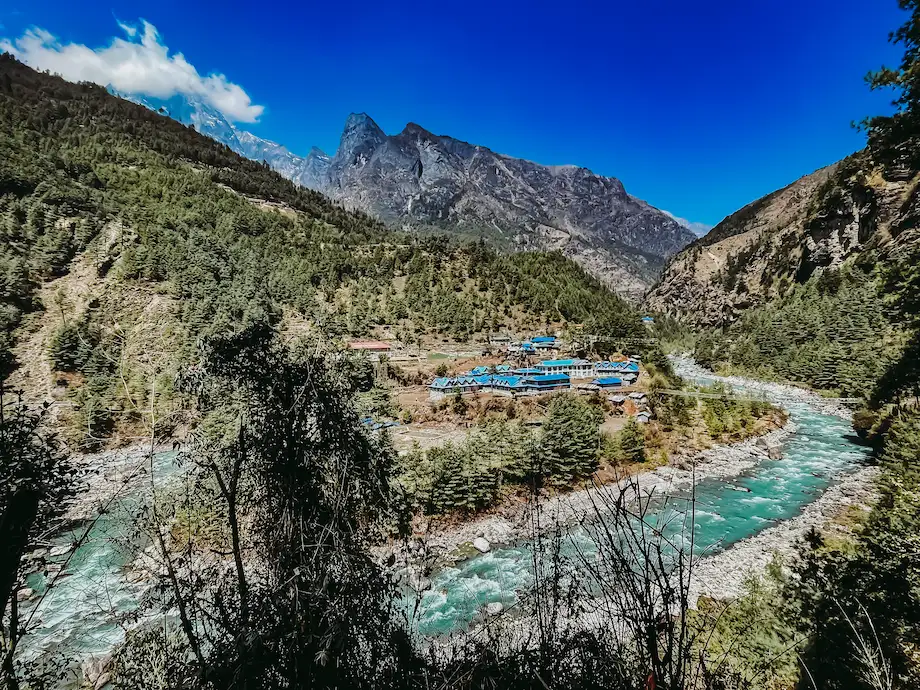

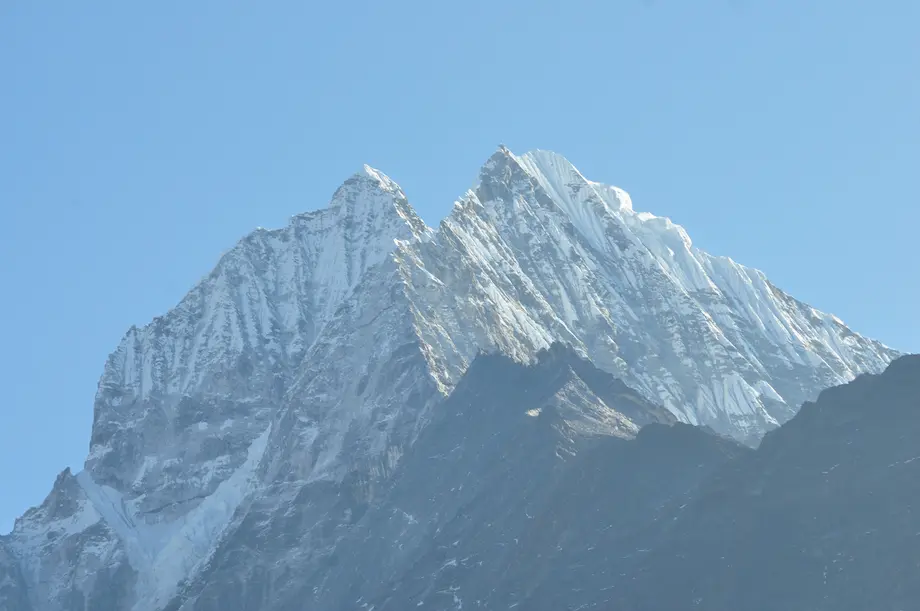

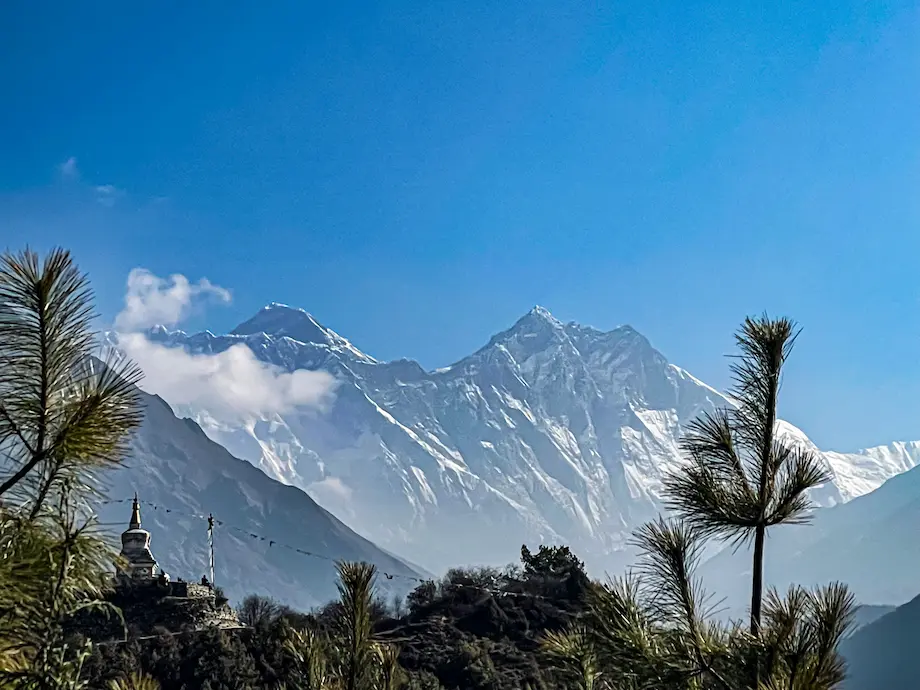
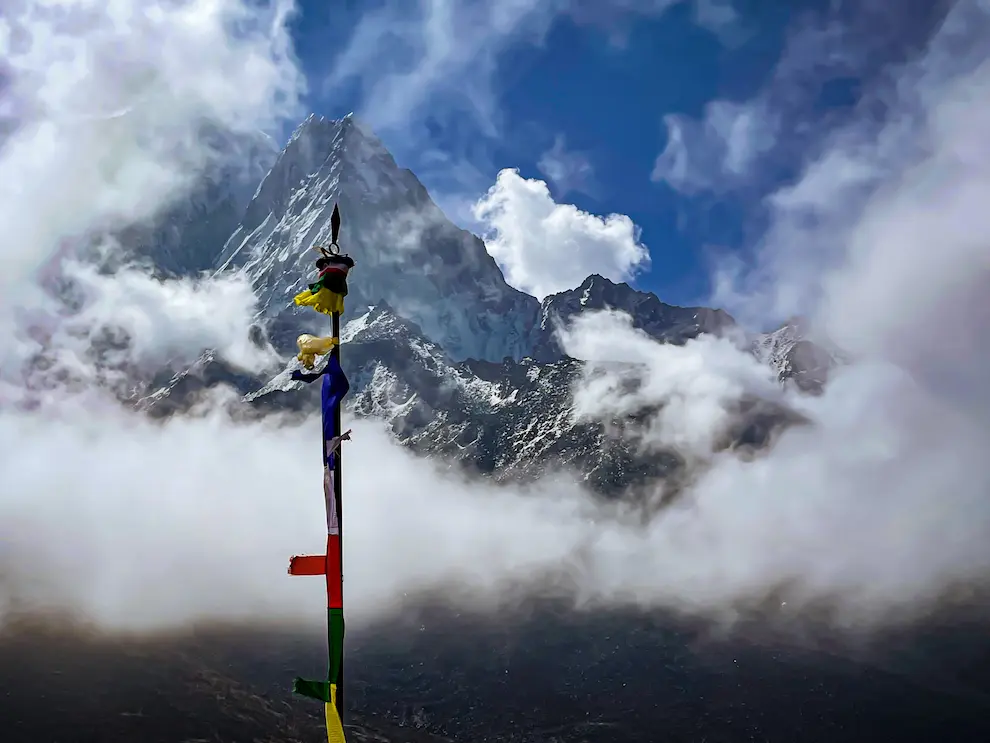
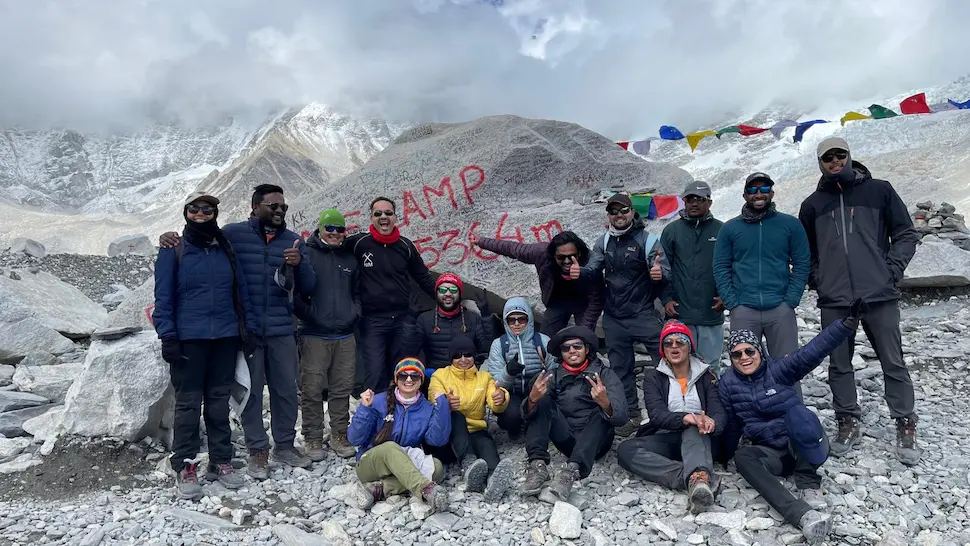
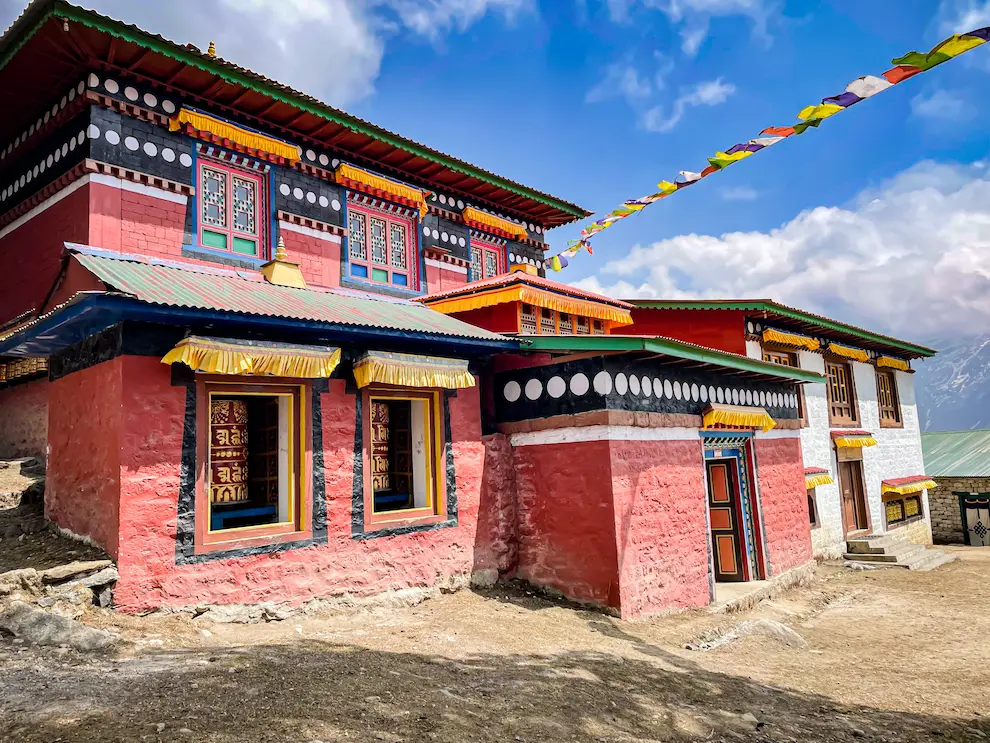
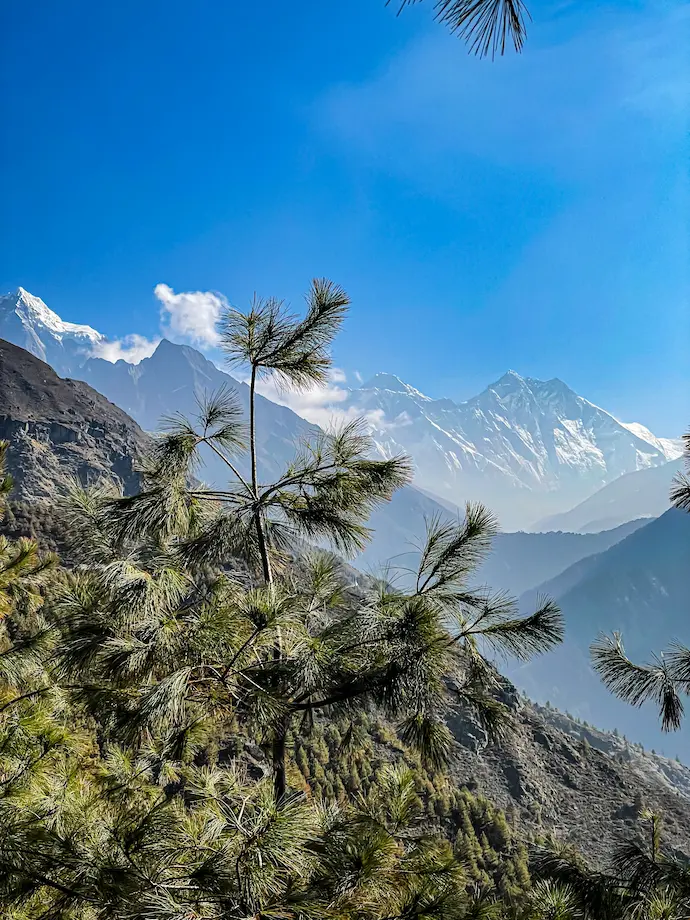
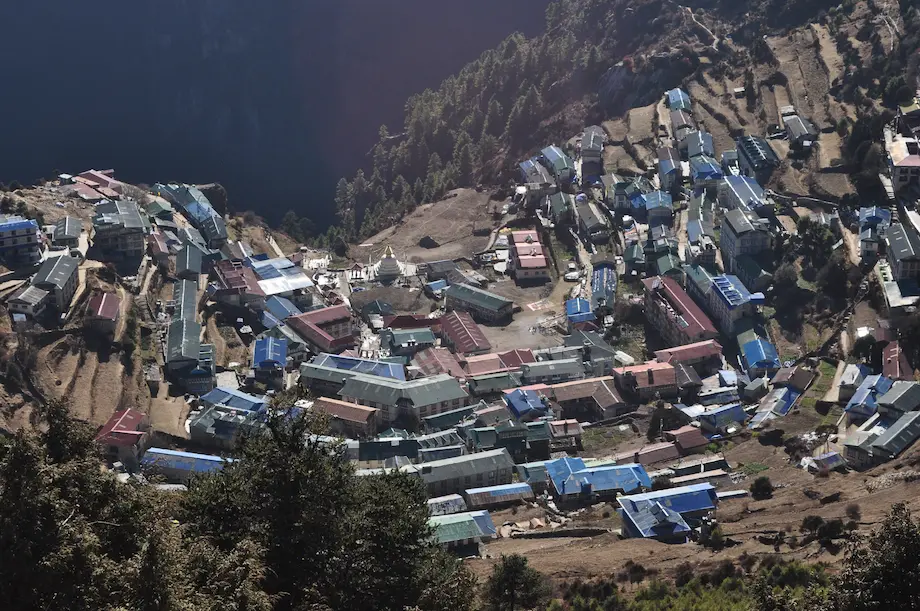
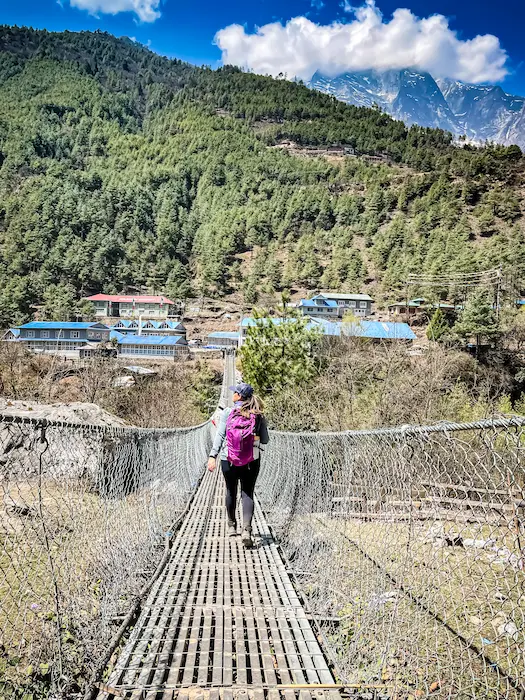
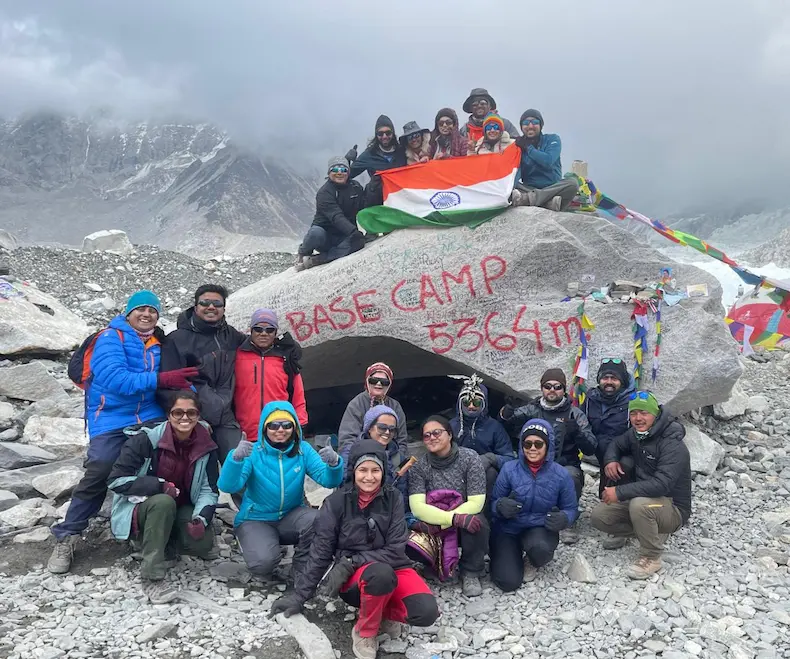
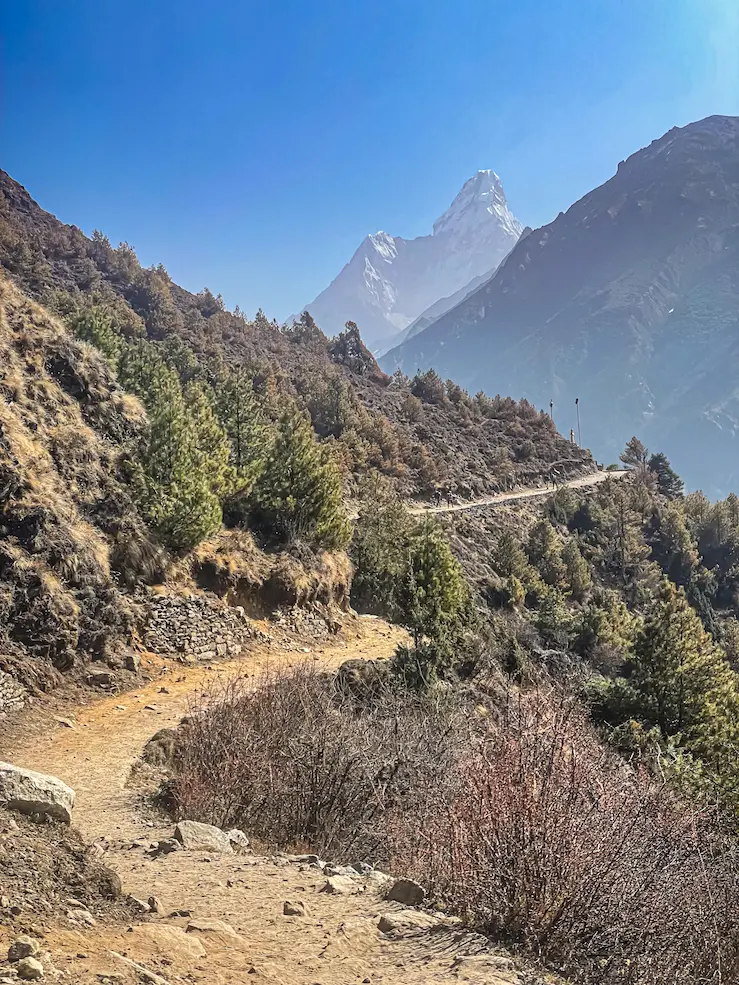
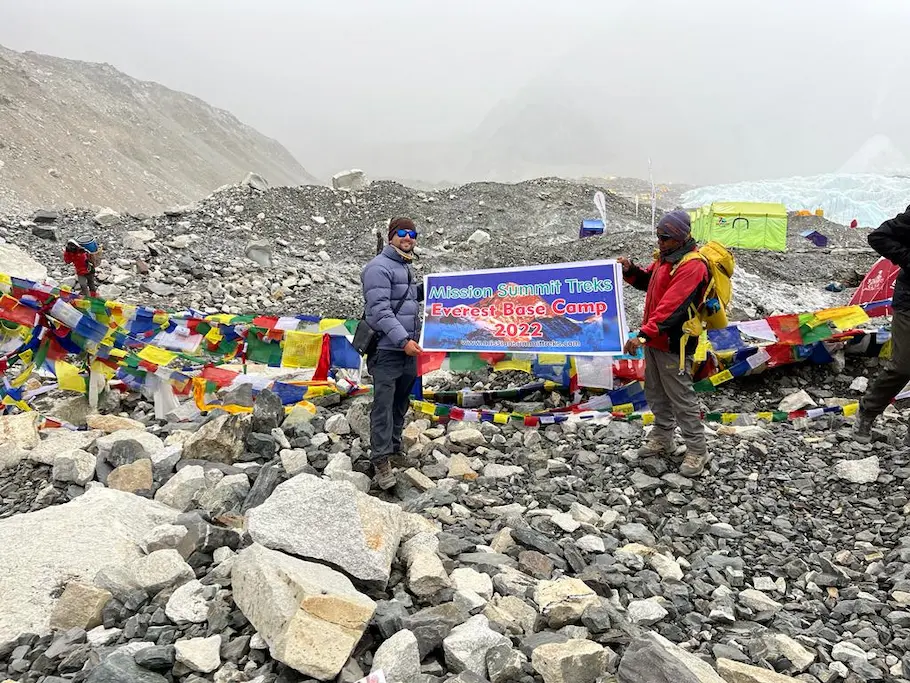
FAQs
Generally, an Everest Base Camp trip is a 14-day trip. If the Kathmandu day tour is included, then the total days extend to 15 days, and if you return to your country on the same day after you came to Kathmandu from Lukla, then your trip will be completed in 13 days.
No, you do not need to have mountain climbing experience to trek to EBC. But you should prepare yourself for a long walk on rough hills. You should practice walking or running for a few hours every day before the three months of the trek. Physical fitness is essential for this trek. If you are a fresher, you should choose the Annapurna base camp trek first to gain mountainous trek experience, and later you can choose the trekking route to EBC.
Yes, you need previous trek experience for the base camp trek so that you will be comfortable walking long distances. Even if you do not have trekking experience, you can prepare for this trek. Preparation can be done by walking two to three hours a day and doing regular physical exercises. At least a minor mountainous trek becomes more supportive of having previous experience.
Yes, you need a sleeping bag for the Base Camp trek. The temperature will remain low, and it is very important to maintain heat in your body. In case you do not want to buy a sleeping bag, you can hire one from Kathmandu and return after the trek.
It takes eight days to walk up to Mt. Everest Base Camp from Lukla, which includes two days of rest. Rest Day is essential for acclimatization, Acclimatization makes your body ready for walking at higher elevations and prevents altitude sickness.
No, people do not live exactly on Everest Base Camp, but some people live on Ghorekshep, which is approximately 4 km from EBC. Particularly, Everest climbers could stay for a particular time at Everest Base Camp, but none of the trekkers live there. Even though trekkers reach Everest Base Camp, they will spend some time in base camp and return to Ghorekshep. Many tea houses are available in Ghorekshep for a night's stay.
Yes, you can do the luxury trek to Everest Base Camp. The best tea houses are available up to Lobuche. You can get a room with an attached bathroom, hot water for a shower, and quality food.
Yes, you need to train for this trek. You can do a normal mountain trek to train yourself and be ready for the EBC trek. Also, you can do proper physical exercise, such as a such as a long walk, running, to prepare yourself for a trek. Preparation should be started within two months.
No, we cannot see Mount Everest from Lukla. We can see Mount Everest during the flight to Lukla. A clear view of Everest is seen from Namche and afterwards during the trek.
If you get altitude sickness, we will provide medicine and manage rest days for acclimatization. If conditions get normal, we will continue the trek. But if your condition becomes poor, then we will either return on foot or hire a helicopter for the Kathmandu flight. If one of the members felt sick in your group, then the sick person should rest in the tea house. The remaining healthier trekkers can continue trekking. A proper cure and medication will be given. In all cases, if conditions become poor, then returning via helicopter is the best option.
The altitude of Everest Base Camp is 5463 m.
Yes, you can see Yak during the Base Camp trek. Sometimes you will see rare yaks on pasture, and sometimes you will meet herds with farmers. Also, you will see yaks carrying loads as a means of transportation on the uphills and lowlands of the Everest region. Most of the time, we can see a number of yaks as we start our walk from Namche.
Yes, sure, you can visit a number of monasteries during Everest Trekking. Monasteries are the heart of base camp trekking, the mane and mani wheels, floating flags welcome you. Monasteries are in many places, like Lukla, Pakhding, Manjo, Namche, Khumjung, Tangboche, and Pangboche. The monasteries of Tangboche and Pangboche are the biggest and oldest, respectively.
An experienced local guide with a guiding license will be your guide. Your trekking guide will manage your trek. You will have a description during the trek and a briefing before the trek every day. Proper guidance and hospitality will make your trip successful and full of entertainment.
Yes, western food is also available on trekking trails but not in all places. You will get all types of food in Namche. You will have various options regarding food and can order of your choice. If the group is large, then 2,3 items will be in option. You will get local food and Nepali food more than western food in most of the tea house.
Yes, it is completely safe to drink water on Everest Trek. You can have mineral water depending on your choice. You will also get warm water to drink.
The permits required for EBC trekking are the Sagarmatha National Park permit and the Khumbu Pasang Lhamu Rural Municipality entrance fee. Your guide will take the permit after reaching Lukla (Pasang Lamu Rural Municipality Permit) and Manjo village (Sagarmatha National Park Permit).
No, we cannot sleep on Base Camp. We will only visit Everest base camp after reaching Ghorekshep and having lunch.
Yes, we can stay at the Italian Camp on Lobuche. There is a wifi facility, 24-hour electricity, a 24-hour hot shower, a gamma bag, oxygen, and almost all first aid services. The Italian Camp is a research center in the Khumbu region that studies the mountain ecosystem of the Everest region.
You can use a helicopter while returning if you cannot walk. In cases of serious health conditions or mild altitude sickness, we will hire a helicopter for return.
Because of bad weather, the flight may be cancelled, and we have to wait for the next flight. If our Lukla flight is cancelled, our trip will be postponed to the next day. We will wait until the next flight. Also, we will offer a Kathmandu day tour, which depends on your choice. You don’t have to pay extra for reticketing. If the flight is cancelled for many days and you don’t have enough time, then we can have a trek in another region. But this condition occurs rarely. We have never faced such a situation.
Only 14–16 passengers can travel together on the Lukla Plane. The plane is much smaller than an international plane.
Yes, Namche is a big town compared to other camps. Namche is a gateway to Everest. Even located at high altitude, Namche is a well-developed small town fascinated by luxury hotels. You will get all the facilities, such as a bank, ATM, medical, marget, hotel, lodge, restaurant and bar, laundry, and money exchange.
Yes, we can see the Sherpa family during our trek. We will visit Khumjung village to enjoy Sherpa culture and food.
The cost for mineral water differs from place to place. wise price is listed in table below. PlacesNepalese currency (NRS)Price in dollarLukla to Namche80-1004$Namche to Pangbuche200- 2802-3$Pangbuche to Dingbuche3003$Dingbuche– Ghorekshep4004$
The cost for a hot shower in Namche is $5; in Dingboche, it is $7 per shower. We will not suggest taking a shower in the high altitude above Dingboche. Similary, the cost for mobile charging is 3$ per gadget up to Namche, 3$ per hour in Dingboche and above places. We suggest bringing a power bank for battery backup on your gadget.
ATMs are available in Namche, and Lukla.
No, we can’t go to base camp by vehicle from Nepa. We can have a helicopter tour up to Ghoreshep and Kalapather. Helipads are available in Lukla, Pakhding, Lobuche, Dingbuche, Manjo, and other places. Otherwise, trekking is the best option for more experience and a cheap trek. But we can go to base camp by vehicle from China.
The EBC route is a relatively hard trek because of the highest altitude, long duration, and extreme weather. It is not that you cannot do the trek due to its hardness. Your physical fitness and acclimatization are the best solutions for doing this trek easily.
Depending on the metabolism of your body and your feeding habits, you may lose weight during the trek to EBC. We will walk around 5-7 hours a day during this trek, which shows a high chance of weight loss, but we will not walk continuously. There will be a rest during lunch time. If you eat enough and get enough sleep, then you may not loses weight.
No, you do not need an oxygen cylinder for Everest trekking. There will be acclimatization on rest days. If you do not have good physical condition, then we do not recommend you do the Base Camp Trek. If a very critical condition occurs during the trek, then we will manage a helicopter to return Kathmandu, which may be quite expensive.
Yes, you can do a solo trek to Everest Base Camp, but you must bear high risks. An unknown path, no explanation, and an unknown system will not make your trip fruitful. You will not know when to have a rest day or where to reach for a night's stay on a solo trek. Less knowledge about tea houses becomes the biggest problem on a solo trek. The Everest Base Camp Trek is an adventurous trek at the highest altitude. Day by day, you will climb up thousands of altitudes, you may not feel well. The altitude sickness may become problematic if you don’t get an idea about acclimatization. Thus, never aim to have a solo trek at Everest Base Camp.
More Info
Mount Everest Base Camp is the most renowned trekking destination in the world. You will spend a complete 10 days in the Everest region, excluding your arrival, departure, and overnight stay in Kathmandu. Starting the trek after the Lukla flight, you will pass the banks of Dudh Koshi, Phakding, Manjo and reach the Everest base camp entrance: Sagarmatha National Park. The Himalayan Thamel, Namche Bazaar, is another attraction during the trek to base camp. The short hike to Namche viewpoint, Everest View hotel, and Syangboche airport makes your acclimatization amazing. The Everest Base Camp Itinerary continues to Tengboche, Dingboche, Lobuche, and Gorakshep on the rocky trail, moraine path, pasture, and thousands of steps.
Visa
You can get a tourist visa in Nepal from the nearby Nepal embassy. If it is difficult to reach the nearby embassy, then you don’t need to worry. You can get a visa on arrival at Tribhuvan International Airport. You should get a 15-day visa or a 1-month visa, depending on your holiday. A 15-day visa is essential for the Everest trek.
Transportation
- Lukla flight
You will take a Lukla flight from Kathmandu. In cases of high traffic, the flight will be from Manthali Airport, Ramechhap. It takes 5–6 hours to reach Manthali from Kathmandu. You should wake up around 1:00 a.m. early in the morning and travel via private bus/car to reach Manthali.
- Private car
We will provide a private car for transportation from Kathmandu to Manthali. A private car will be provided for pickup and drop-off from the airport to the hotel.
What kinds of accommodation should we expect?
Accommodation in the EBC trekking are categorized in three forms: normal, moderate and luxury based on the trekking plan. Normal tea houses have common bath room with clean bed room. Moderate accomodation includes attached room with hot shower except in Lobuche and Gorekshep. The luxury accommodation is the most advanced service that provide luxury room with electric blankets. It is the most expensive plan in Everest region.
In this budget trek, we will provide the best tea houses with clean rooms and attached bathrooms up to Namche. After passing Namche, you will find bathrooms outside the room. We can costomize the plan to get attached room on the available places. If you want luxury accommodation, then you should book the Everest base camp luxury trek.
Preparation
The trek to Everest Base Camp is moderately difficult, with a high chance of altitude sickness. We always recommend having a Himalayan trekking experience before trekking to Everest base camp. Preparation is the most important part of a successful trek. You should follow the trek preparation guidelines and remain mentally and physically fit for the trek.
Guidelines for Everest Base Camp (EBC) Trek preparation are:
- Walking, cycling, or running: You should walk at least 2 or 3 hours a day, run 10 or 12 kilometers, or cycle for 1 or 2 hours a day to increase your stamina. You can easily walk 5 to 6 hours on the trekking route with this practice.
- Physical training: You should do regular physical exercises such as muscle-building workouts, strength training, and cardiovascular training to avoid tiredness and twisting muscles during the trek. You can join the gym, hire a trainer or do exercise yourself with the aim being stronger and more energetic for the trek.
- Physical checkups and medication: You should do physical checkups before leaving for the trek. If you have to take regular medicine, always remember to bring the medicine in full dose until you stay in Nepal.
- Packing list: Before packing your bag, list down all the required essentials concerning your trekking company. After that, pack all the listed items, medicine, and ointments as per your requirements. Don’t try to overload your bag with unnecessary items. You can also pack chocolates and dry fruits as per your choice to eat during the trek.
Note: EBC is short form of Everest Base Camp
Meal
14-day Everest base camp trek package includes three meals. You will get a variety of food items depending on the size of the size of the group.. Generally, you will get a set breakfast which includes tea/coffee, toast, egg items, fried potato or muesli, porridge, oats, and pancakes in the morning before leaving for the trek.
You will have Lunch at around 12 – 1:00 p.m. Lunch includes Nepali thali (lentils, rice, pickles, varieties of curry, pappad, and salad), Noodles, momo, chowmein, and pizza. Similarly, you will have dinner at around 6 to 7 pm, you can get Nepali Thali, either veg or nonveg, momo, spaghetti, chowmein, macaroni, pasta, mo: mo, pizza, or noodles. We suggest you to eat veg food so that it will digest properly and get enough energy. Nepali thali (dal Bhat) is the best-recommended food to eat during trek. It contains balanced diet and keeps you energetic during the trek.
The local Food like : Dal Bhat, Thukpa, Chowmin and MO: MO are the Famous food in Nepal. We can get these famous food in tea houses of Nepal.
Temperature
Temperature in Everest region varies from months to month. Here is the monthly estimated temperature of the Everest base camp. You can easily identify the best time for trekking to EBC from Table 1.
Table 1: The temperature profile of Everest base camp
| Month | Max. Temperature | Min. Temperature |
|---|---|---|
| January | 4°C | -17°C |
| February | 4°C | -15°C |
| March | 7°C | -12°C |
| April | 10°C | -5°C |
| May | 15°C | 0°C |
| June | 17°C | 5°C |
| July | 16°C | 8°C |
| August | 16°C | 6°C |
| September | 17°C | 2°C |
| October | 12°C | -7°C |
| November | 7°C | -12°C |
| December | 4°C | -15°C |
According to Table: 1, January is the coldest month and July is the hottest month in Everest region.The temperature remains moderate during March, April, May, September, October and November.
Day to Day trek distance
Day to day distance covered during Everest base camp trek varies while ascending to base camp and descending to Lukla. The table below shows the approximate distance of the trek.
| Day | Starting and ending point | Distance (km) | Distance (miles) | Approximate time |
| 1 | Lukla to Phakding | 9 km | 5.6 miles | 3-4 hours |
| 2 | Phakding to Namche | 11 - 12 km | 6.2 - 7.5 miles | 6-7 hours |
| 3 | Namche to Tengboche | 10 km | 6.2 miles | 4-5 hours |
| 4 | Tengboche to Dingboche | 11 km | 6.8 miles | 5-6 hours |
| 5 | Dingboche to Lobuche | 12 km | 7.5 miles | 5-6 hours |
| 6 | Lobuche to Gorekshep | 4.5 km | 2.8 miles | 4 hours |
| 7 | Gorekshep to Mount Everest | 3.5 km | 2.2 miles | 1-2 hours |
| 8 | Gorekshep to Kala patthar | 2.5 km | 1.6 miles | 1-2 hours |
| 9 | Gorekshep to pheriche | 14 -15 km | 8.7 - 9.3 miles | 5 hours |
| 10 | Pheriche to Namche | 20 -22 km | 12.4 - 13.7 miles | 8 -9 hours |
| 11 | Namche to Lukla | 10 - 12 km | 6.2 - 7.5 miles | 8-9 hours |
Charging gadget
You can charge your gadgets in the dining hall of the tea house. It will be better to bring a power bank so that you can charge your gadgets in the room. You should pay NRS 100 per gadget in Lukla, Phakding, and Namche. Similarly, you should pay NRS 300 per gadget in Tengboche, Dingboche, Lobuche, Gorakshep, Pheriche, and other places after Namche.
Altitude Chart
Here is the Everest Base Camp trekking altitude chart.
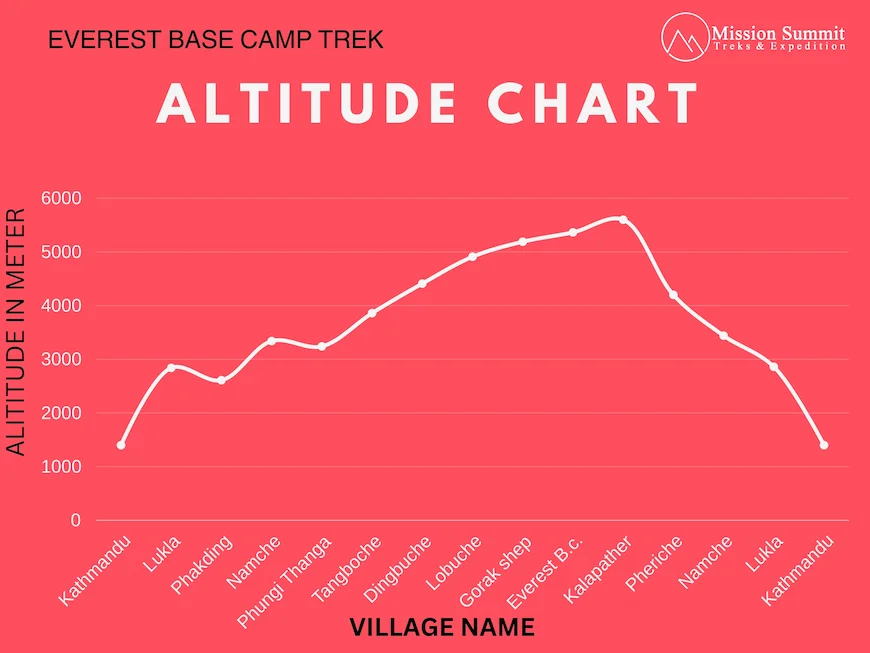
Drinking water
Portable water is available in tea houses in the Everest region. Mineral water and hot water are both available at an extra charge during the trek. You can also bring a water purifier and use tap water as well.
Sleeping bag
Our company will provide you with a -20⁰C sleeping bag that should be returned after the trek. You can also bring your own sleeping bag of your choice.
Best Time
There is always curiosity about the selection of the best time for trekking. In the case of trekking in the Everest region, spring (March, April, and May) and autumn (September, October, and November) can be the best times. Spring and autumn are considered the best season for trekking EBC. You can enjoy the pleasant weather, favorable temperature, greenery of the surrounding area, and blooming flowers during spring and autumn. The clear sky and mesmerizing view of Mt. Everest, Ama Dablam, Pumori, Lhotse, and other peaks of the Mahalangur range are the best part of choosing the best time for base camp trek.
You can do the trek during December & January, but you have to face colder temperatures than in the best season. Off season trekking will be challenging but you will have fewer crowds on the EBC trekking route. You can get direct flight to Lukla from Kathmandu during November, December, January and February. But we always suggest choosing the best time (March, April, May, September, October and November) rather than January, February, June and July. Most of the tea houses remain closed and there is less chance of getting clear view of mountains during off season.
Wi-Fi during EBC Trek - 14 Days
Most of the trekkers want to know whether there is WI-Fi available on Everest Base Camp Trail or not. The answer is Yes. Most of the tea house have Wi-Fi at an additional cost, but if you have a local sim card from Nepal, you can use in Lukla, Phakding, Namche, and Tengboche. From Dingboche, you can use the Everest link. You can buy a Giga bite (GB) with a Card Username and password, then use WI-FI in Dingboche, Lobuche, Gorakshep, and Pheriche.
Side trips
This trek offers different side trips: Khumjung village, visiting monastries, Nagarjuna peak climbing, Kalapatthar, Lobuche peak climbing, Gokyo lake trek, Cho la pass, Kongma La pass, and Ama Dablam base camp trek. Some side trips (Khumjung village hiking, Nagarjuna peak climbing and Kalapatthar climbing) are included in the trekking whereas Gokyo lake trek, Cho la pass, Kongma La pass, and Ama Dablam base camp trek are nearby destinations that can be continued during Everest base camp trek after customization.
Side trips during EBC trek are important for acclimatization. We will gain altitude while hiking to Khumjung village from Namche and Nagarjuna peak from Dingboche. These two destinations are crucial to prevent altitude sickness.
Kalapatther hiking is the best side trip for mesmerizing views of Mount Everest. It occurs on the last day before returning from Everest base camp.
Packing list
The trek to Everest Base Camp is one of the most challenging tasks in Nepal. The higher the altitude, the greater the risk. If you don't miss any EBC trek packing list, you will reduce your challenge.
Recommended Gear List:
- Good wind/rain jacket
- Warm fleece jacket or jersey
- Good boots, either light-weight trekking boots or light full leather boots
- Good sleeping bag (which can be rented or bought in Kathmandu)
- A comfortable day pack, preferably with a waistband.
- Fleece jacket or pullover
- Fleece Wind-Stopper jacket (optional)
- Waterproof (preferably breathable fabric) shell jacket
- Down vest and/or jacket (optional)
- Lightweight gloves
- Heavyweight gloves or mittens with a waterproof shell outer
- Sun hat or scarf
- light balaclava or warm fleece hat
- Sunglasses with UV protection
- T-shirts
- Underwear
- Hiking shorts
- Light and expedition-weight thermal bottoms
- Fleece or wool pants
- Waterproof (preferably breathable fabric) shell pants
- Thin, lightweight inner socks
- Thick, warm wool hiking socks
- Hiking boots with spare laces
- Camp shoes (sneakers and/or sandals)
- Note: You can add clothing to increase your sensitivity to colds.
Other optional, necessary equipment
- Headlamp (e.g. Petzl Zoom) with spare bulbs and batteries
- Small pad or combination lock-to-lock trek bag
- Basic First Aid Kit (We also provide a comprehensive first aid medical kit and oxygen meter)
- Large plastic bags - for keeping items dry inside trek bag
- Day pack (approximately 2500 to 3000 cubic inches)
- Water bottles (2 bottles recommended)
- Toiletries
- Small wash towel
For more information, click here: Everest base camp packing list
Altitude Sickness
Everest trek has a high chance of getting Altitude sickness. The symptoms of altitude sickness will occur within 6 to 24 hours of achieving a high altitude. The sickness is fatal and can result in death if not treated in time. You need to stay alert to any of the symptoms that occur.
Symptoms of Altitude sickness
- Headache
- Nausea and vomiting
- Dizziness
- Tiredness
- Loss of appetite
- Upset stomach
- Feeling unsteady
- Shortness of breath
- Increased heart rate
- Difficulty sleeping
An effective measure to recover from early AMS
If you feel any of the symptoms of altitude sickness, follow the guidelines mentioned below:
- Do not climb any higher for the next 48 hours
- Descend to a lower altitude if possible
- Take complete rest until you feel well
- Do not exercise
- Do not smoke
- Drink plenty of water
- Take external oxygen supply if necessary
- Take anti-sickness medicines
If you do not see improvement in your health within 48 hours, we will immediately deport you to the city for medical support.
Preventive Measures
There is no effective method to train your body prior to trekking so as to adapt to the high altitude. Some of the preventive measures of altitude sickness are as follows:
- Take plenty of rest
- Ascend slowly and gradually as you reach higher
- keep yourself hydrated
- Eat high-calorie food
- Do not smoke, drink or consume tranquilizing medicines
Insurance
During emergencies like acute altitude sickness or a natural calamity, you might have to be deported immediately in a helicopter. The deportation cost will be covered by travel insurance that needs to be purchased before you start the trek. You should get insurance before starting the trek.
Recommended travel insurance company for Everest Base Camp (EBC) Trek
- USA : Allianz & Tripmate
- CANADA : Allianz & TuGo
- Brazil: April & World Nomads
- India : Bajaj Allianz & ICICI Lombard
- South Africa: Best in their country
- Mexico: Best in their country or AXA Travel Insurance
- Morocco: Best in their country
- European Countries: All are best and must be included in trekking in the Himalayas with top height.
Trekking option
- Solo trekking with a private guide and porter.
- Trekking is only possible with the EBC Trek guide.
- Trekking with a guide and porter.
- Trekking with Group with guide & Porter.
You Don’t Like the EBC Trekking Package?
If you don’t like this EBC trekking package, then we have many alternative trekking routes in the Everest region, such as Gokyo Cho la Pass Trek, Everest Three Passes Trek, Everest Panorama Trek, and the Ama Dablam Base Camp Trek. Please contact us for other treks in Everest region.






